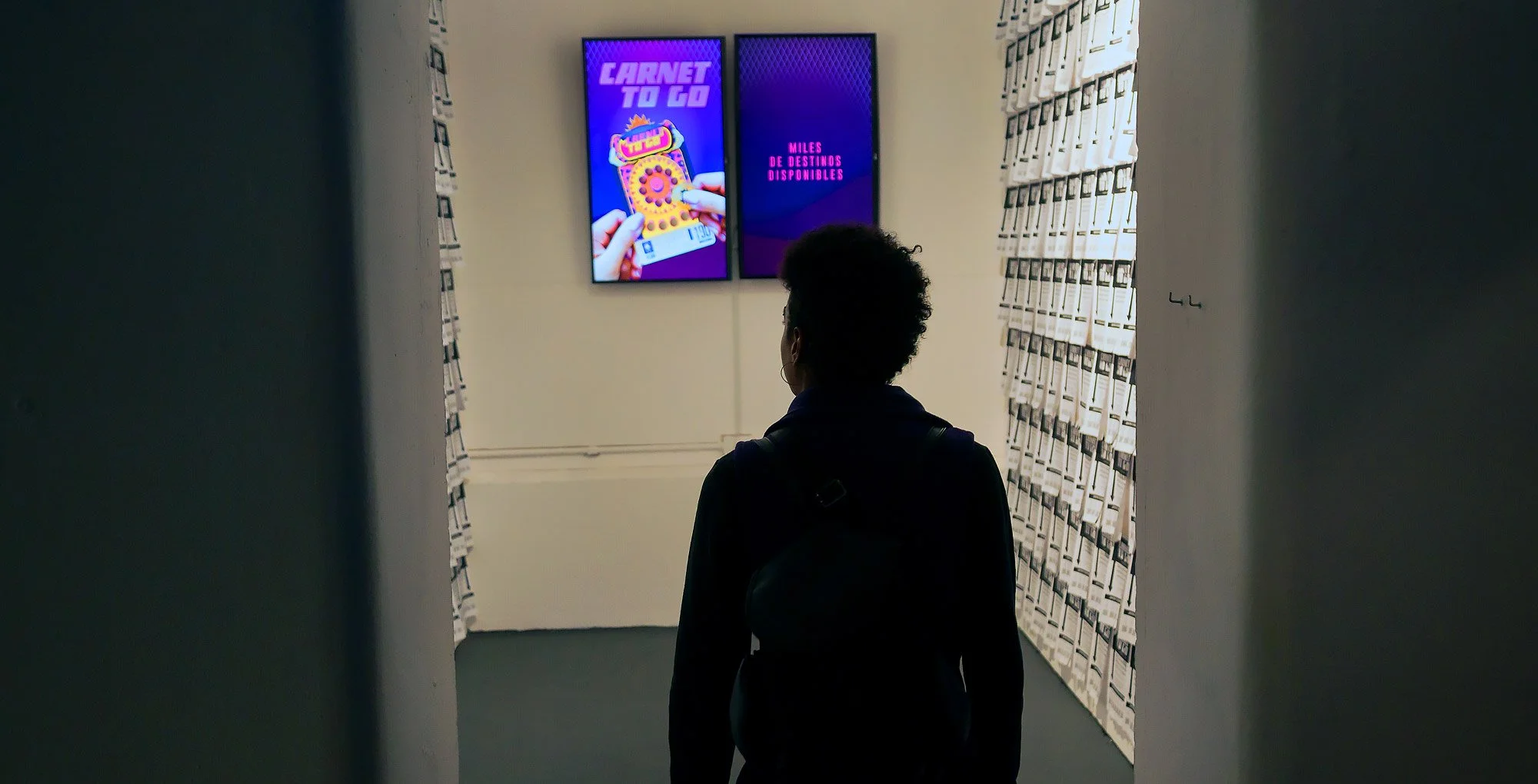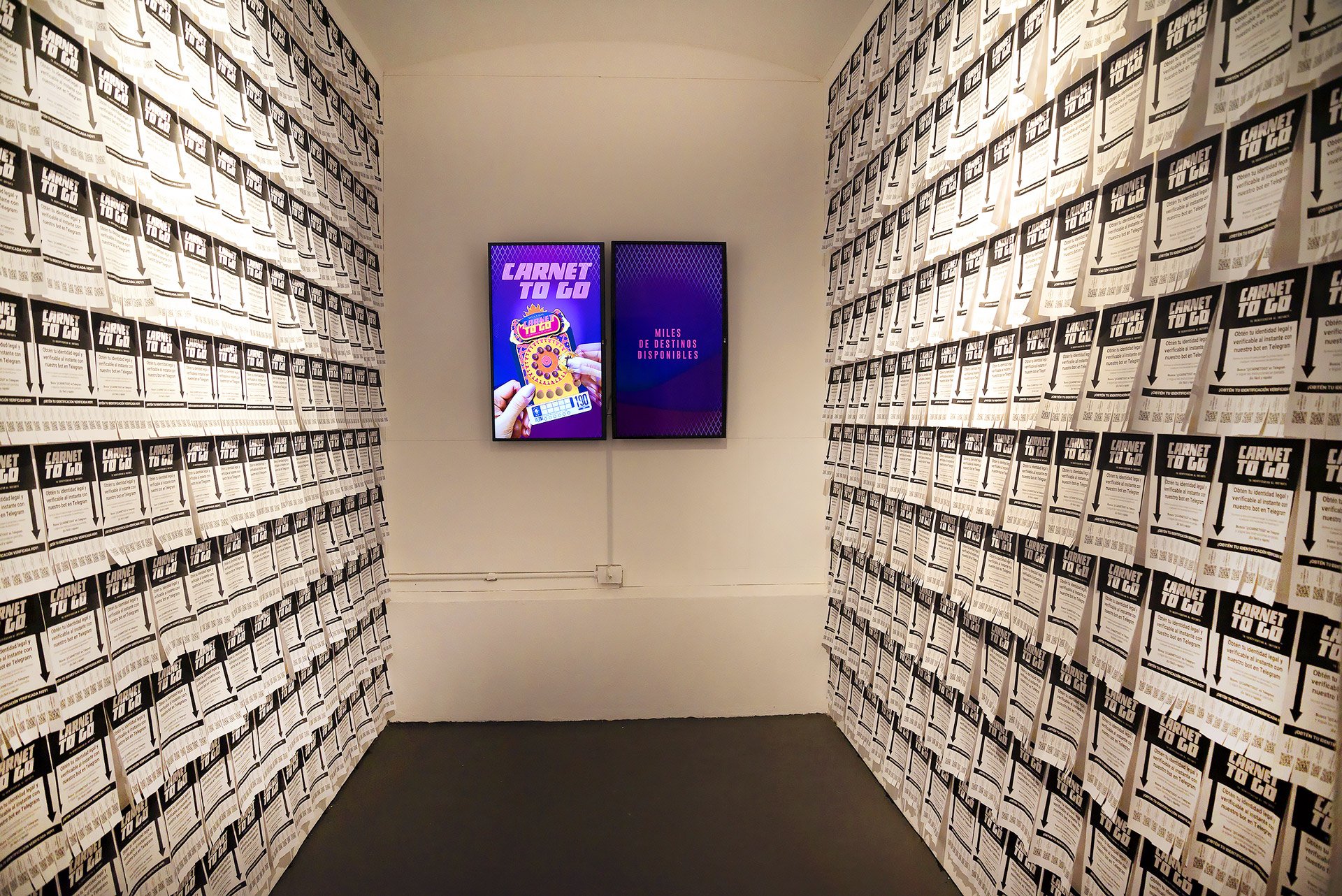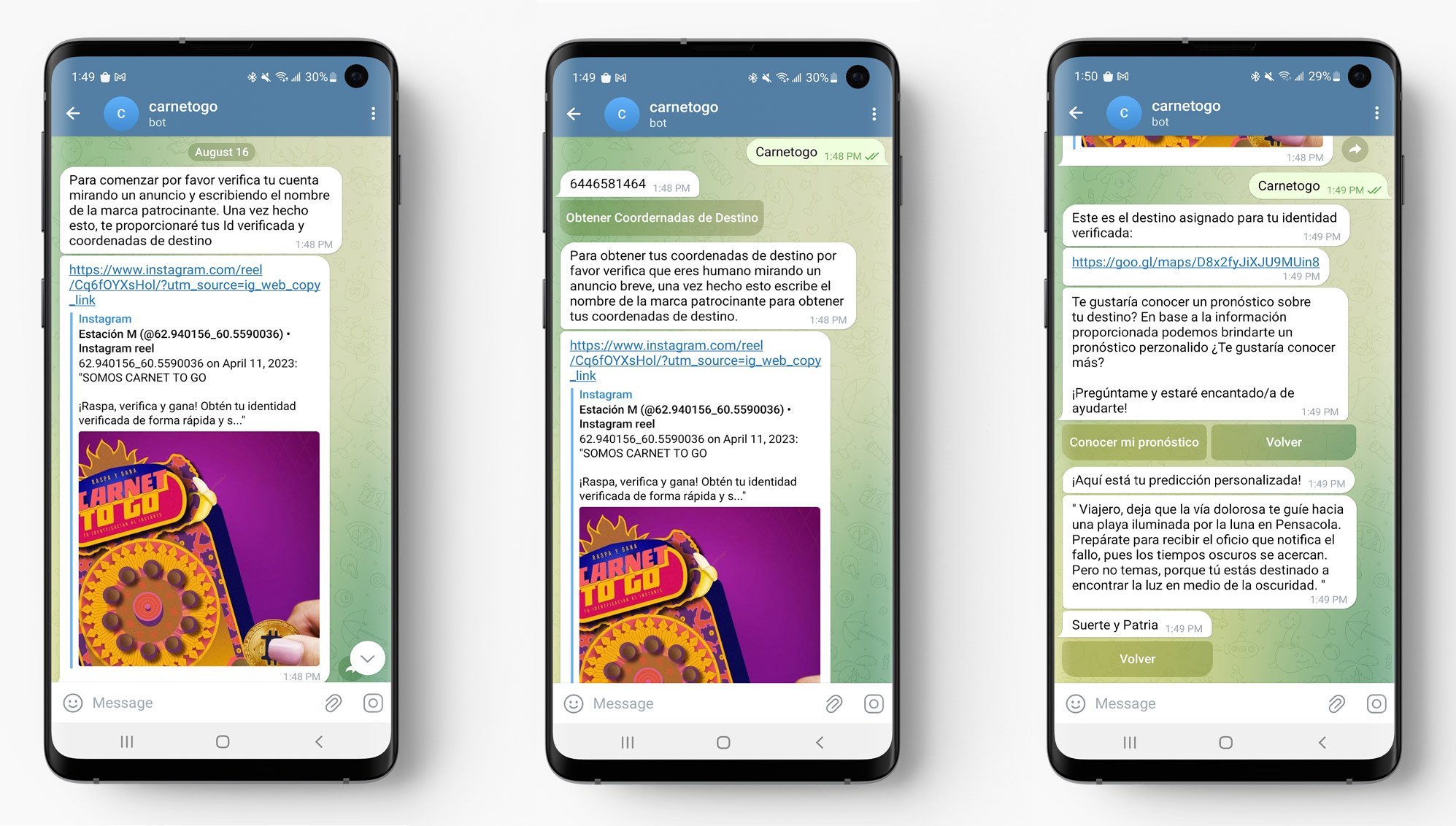Espacio de Arte Contemporáneo
Uruguay
Instant and disposable identification system.
Role
Artist: Responsibilities included concept development, creation of all print and digital materials, chatbot flow creation, and installation design.
Tools
Photoshop
Illustrator
Aftereffects
Premier
Xenioo
"Carnet to Go" imagines the possibility of an instant and disposable identification system, realized through a fictional design. Accessed via a multichannel installation inspired by lottery cards, the setup includes around 250 photocopies affixed to the exhibition space walls, a Telegram chatbot, and a video ad. Users can scan QR codes or use the chatbot to obtain an identity number and future destination prediction. The project prompts reflection on the intricate interplay between identity and technology in bureaucracy.
"Carnet to Go" delves into several conceptual themes:
Rethinking Identification Systems: "Carnet to Go" prompts a critical examination of identification systems. By presenting the idea of disposable identities, the project looks into the limitations of rigid identification structures that fail to capture human complexity. The deliberate inclusion of elements of chance and vulnerability within the installation offers a unique lens to scrutinize the intricate power dynamics inherent in digital identification systems, particularly within the context of humanitarian efforts.
Randomness as a Bureaucratic Tool: By offering participants a glimpse into a future identity system guided by seemingly fortuitous outputs, akin to the US Lottery visa program, the "Carnet to Go" project delves into the use of randomness as a bureaucratic instrument. Revealing optimistic predictions and potential global arrival points, including unconventional ones like the open ocean, the endeavor navigates how randomness can be harnessed to exert influence and obscure mechanisms within bureaucratic systems. This exploration prompts contemplation on the intricate interplay between technology, governance, and administrative structures.
Hypercapitalist Manipulation in the Era of Technological Progress: Within the realms of hypercapitalism, the relentless drive for precision and efficiency often fosters a misleading perception of progress. The installation's incorporation of advertising offers insight into how profit-oriented motives can inadvertently shape the perpetuation of bias in a given system. As technology becomes increasingly enmeshed in the fabric of daily existence, the allure of convenience and predictive foresight often eclipses concerns regarding data privacy, manipulation, and the potential erosion of individual agency.
Conceptual Themes
Project Components
1
Exhibition Space Installation: At the project's core lies an interactive installation within the exhibition space, comprising around 250 photocopies attached to the walls. Each of these photocopies encapsulates details about the identification system, accompanied by a detachable slip with a QR code. These QR codes act as a gateway to help access their temporary identities.
2
Telegram Chatbot: Complementing the physical experience is a Telegram chatbot accessible through smartphones. Visitors can use the chatbot to receive their identity number, destination, and personalized future predictions.
3
Video Advertisement: A video ad amplifies the project's impact. This video, accessible through digital platforms, provides an overview of "Carnet to Go."
In summary, "Carnet to Go" comprehensively examined a spectrum of pertinent global issues. It analyzed conventional identification structures to reveal their limitations in accommodating human complexity. The introduction of randomness and contingency provided a frame through which to examine bureaucratic operations and the underpinning dynamics of power. Furthermore, the project’s concern with hypercapitalism manifested the potential distortion in the trajectory of progress, offering a platform to discuss critical matters such as data privacy and individual agency, particularly in the context of contemporary digital advancements. These ideas, as a whole, open a broader conversation on the multifaceted impacts of digital systems on a global scale.







